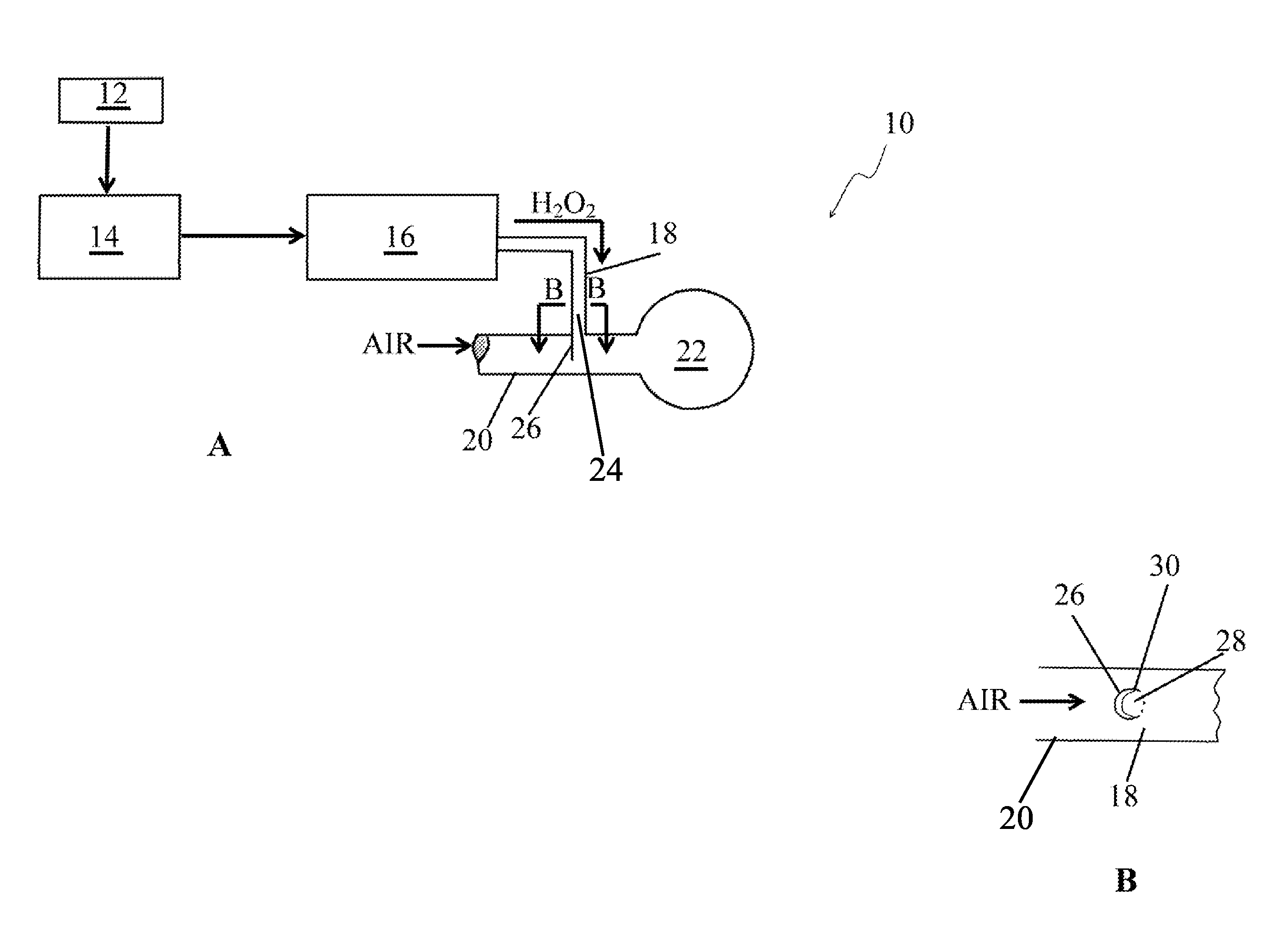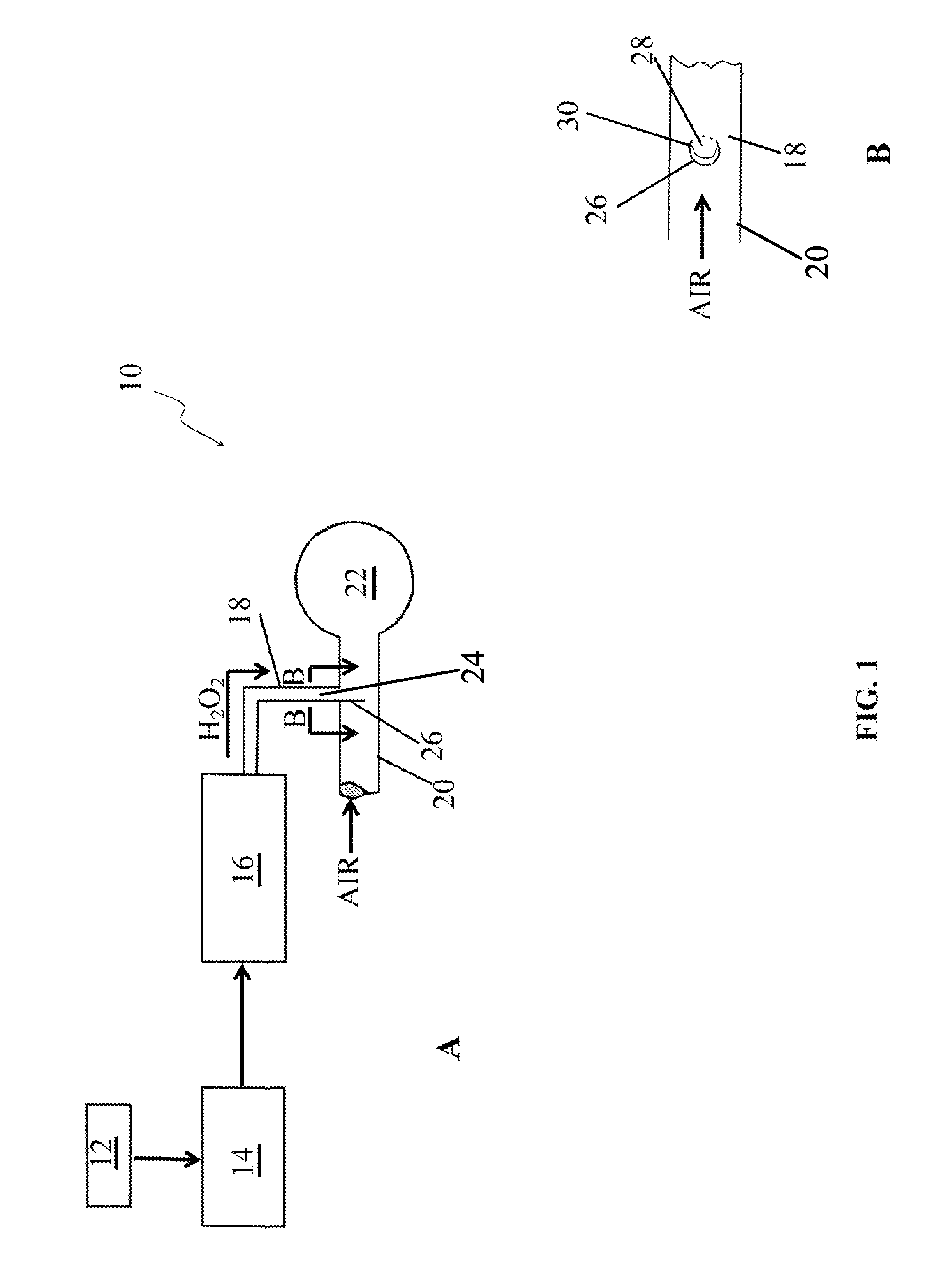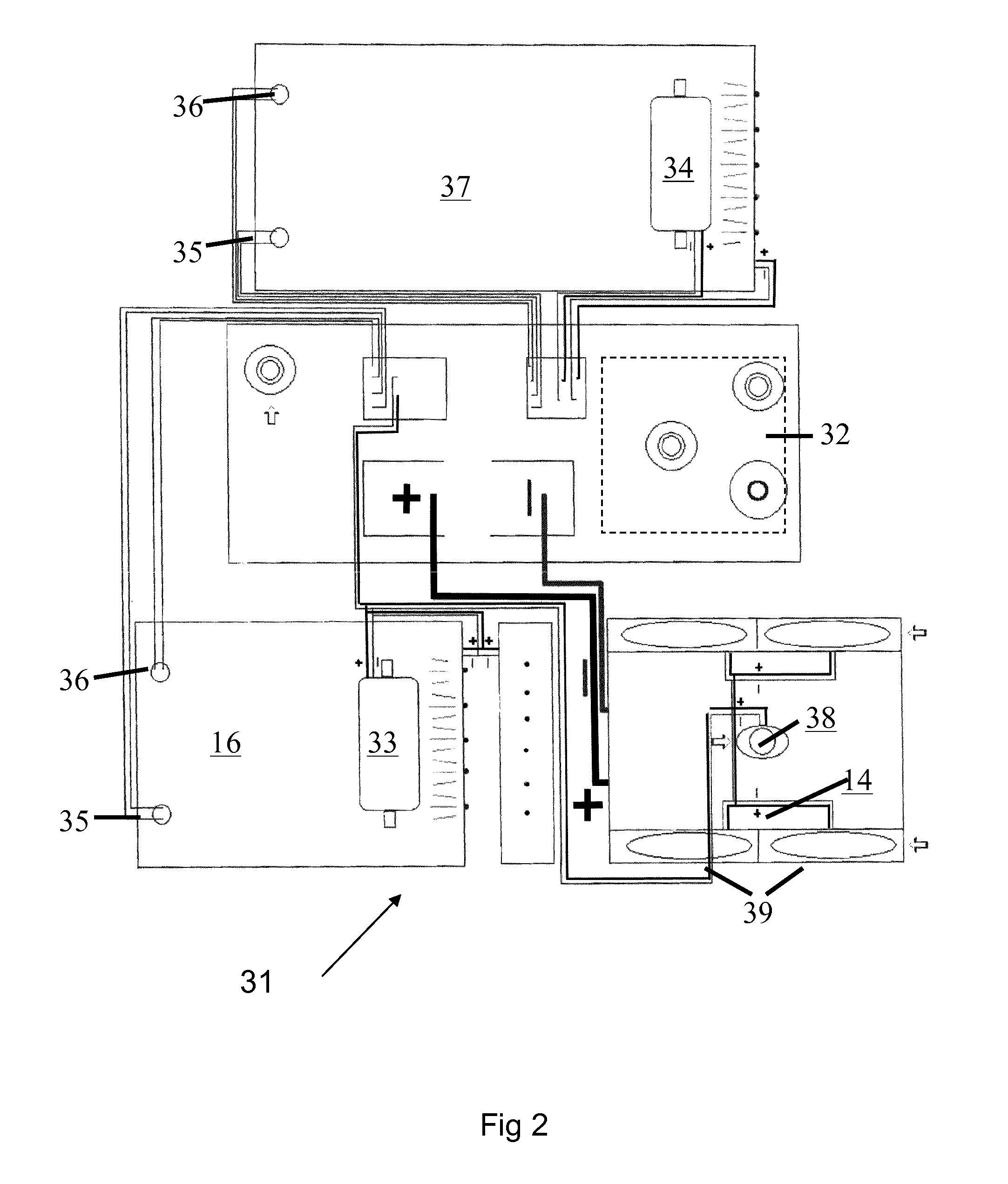Hydrogen feed method and systems for engines
a technology of hydrocarbon feed and engine, which is applied in the direction of machines/engines, mechanical equipment, combustion air/fuel air treatment, etc., can solve the problems of increasing the complexity of state of the art internal combustion engine systems, the increase of the cost of implementation, and the increase of the cost of fuel consumption. , to achieve the effect of increasing the combustion of hydrocarbons and promoting efficient combustion
- Summary
- Abstract
- Description
- Claims
- Application Information
AI Technical Summary
Benefits of technology
Problems solved by technology
Method used
Image
Examples
example 1
Fluid Example 1
[0070]The three-season Hydrogen Reaction Fluid is currently formulated using about 0.64% weight percentage of an alkali hydroxide (such as sodium hydroxide) dissolved in deionized water.
[0071]The winterized versions of the reaction fluid (i.e., where ambient temperatures range from about −50 F to 32 F), have 2-Propanol as a component of its composition. The alcohol's presence is primarily to lower the freezing temperature of this mixture. Different freeze protection levels contain different alcohol percentages. An embodiment of the winter blend also contains between about 50% and 500% more chemical salts, preferably between about 75 and 300% and most preferably between about 100 and 200% more chemical salts to achieve the hydrogen production rates seen when the 3-season fluid blend is used.
example 2
Fluid Example 2
[0072]The winter blend (wherein the blend accommodates 0° F. average ambient temperatures) is currently formulated using from about 2% to about 5% by weight of alkali hydroxide (such as sodium hydroxide), preferably 2.2% to 2.8%, and most preferably about 2.3% by weight sodium hydroxide (“Alkali chemical salt”). The hydroxide is substantially completely dissolved in the deionized Water (from between 60% to 70% by formulation weight, preferably 65% to 70% and most preferably 68.7% by formulation weight). From about 15% to 40% by weight, preferably 20-35% by weight, and most preferably about 27-30% by weight of the 2-Propanol is added to the alkali hydroxide spike water and mixed to a homogeneous blend of the three ingredients.
example 3
Fluid Example 3
[0073]A second winter blend (wherein the blend accommodates ambient temperatures which average minus 10° F. utilizes between 2% and 4% by weight of alkali metal salt, preferably between about 1% and 2% and most preferably about 1.4 to 1.5% weight percentage. The salt is substantially completely dissolved in the deionized water between 50 and 70% by formulation weight, preferably between 55 and 65% and most preferably about (63% by formulation weight). Between approximately 20-45% by weight, preferably 30-40% and most preferably between about 35% and 36% by weight of the 2-Propanol is added and the three constituents homogenized.
PUM
 Login to View More
Login to View More Abstract
Description
Claims
Application Information
 Login to View More
Login to View More - R&D
- Intellectual Property
- Life Sciences
- Materials
- Tech Scout
- Unparalleled Data Quality
- Higher Quality Content
- 60% Fewer Hallucinations
Browse by: Latest US Patents, China's latest patents, Technical Efficacy Thesaurus, Application Domain, Technology Topic, Popular Technical Reports.
© 2025 PatSnap. All rights reserved.Legal|Privacy policy|Modern Slavery Act Transparency Statement|Sitemap|About US| Contact US: help@patsnap.com



